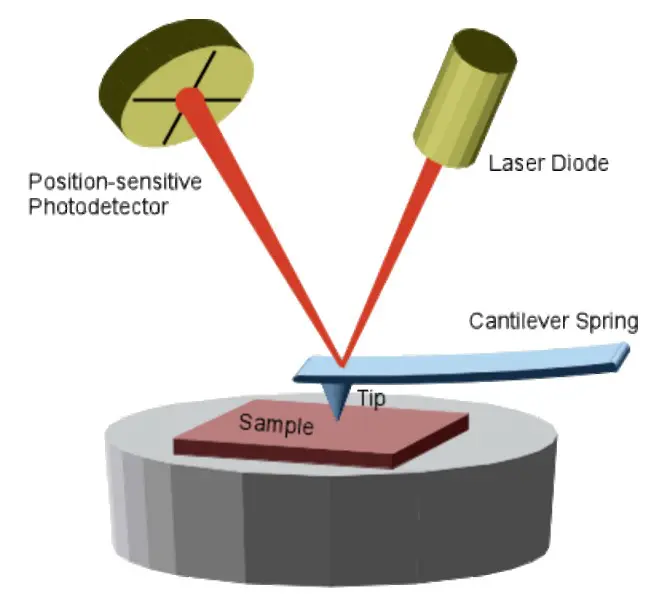In recent years, the field of surface energy measurement has undergone a transformative shift, with technological innovations paving the way for new methodologies. One of the most significant advancements in this area comes from the intersection of surface science and smartphone technology. This innovative approach has been exemplified by companies like Droplet Lab, founded in 2016 by Dr. Alidad Amirfazli, a faculty member at York University, alongside researchers Dr. Huanchen Chen and Dr. Jesus L. Muros-Cobos. Their work highlights how a commonly used consumer device can facilitate accurate and accessible measurements of surface energy, ultimately impacting various industries from materials science to product development.
Understanding Surface Energy Measurement
Surface energy is a critical property that defines how liquids interact with solid surfaces. It plays a vital role in numerous applications, including coatings, adhesives, and inks. Traditional methods of measuring surface energy often require sophisticated laboratory equipment and expertise, making them less accessible to researchers, engineers, and even small businesses. These conventional techniques often involve meticulously controlled environments, which can be time-consuming and costly. As the demand for rapid and reliable measurements increases, the need for innovative solutions in this area has become more pressing.
The Emergence of Smartphone Technology
Smartphones, equipped with advanced sensors and cameras, have transformed the way we approach various scientific fields, including surface energy measurement. The proliferation of smartphone technology has provided researchers with accessible tools that can facilitate complex experiments without the need for prohibitively expensive apparatus. By leveraging the capabilities of smartphones, companies like Droplet Lab are bridging the gap between sophisticated surface analysis and everyday technology, empowering users with tools that enable quick assessments of surface interactions.
Droplet Lab's Approach
Droplet Lab has pioneered the use of smartphone technology in measuring surface energy through a unique application that combines image processing techniques with fluid dynamics principles. By using a smartphone camera to capture images of droplets on surfaces, the application can analyze the shape and behavior of droplets to extract critical information about surface properties. This method circumvents the need for specialized equipment, making it an attractive option for users in various fields ranging from education to industry.
The underlying principle of this innovative measurement technique stems from the pendant drop method, where the shape of a droplet informs the surface tension of the liquid and the interaction with the surface. Droplet Lab’s app utilizes algorithms trained to recognize and analyze these droplet shapes, allowing users to obtain reliable surface energy measurements in real-time. This level of accessibility has the potential to democratize the field of surface science, making it possible for a broader audience to engage with these crucial measurements.
Benefits of Smartphone-Based Measurement
The integration of smartphone technology into surface energy measurement offers several notable advantages. First and foremost is accessibility; researchers and engineers can now conduct surface energy assessments using devices they already possess. This not only reduces costs but also speeds up the measurement process. Furthermore, the mobile platform allows users to easily share data and collaborate in real-time, fostering a more interactive scientific community.
Additionally, the smartphone approach promotes versatility. The Droplet Lab app can be applied in diverse settings, from industrial environments to educational institutions. This versatility means that a variety of users can benefit, whether they're optimizing manufacturing processes, developing new materials, or teaching students about surface science concepts. The educational implications alone highlight how innovative approaches can inspire the next generation of scientists and engineers.

Future Implications and Research Directions
The work being done by Droplet Lab embodies a broader trend in which technology is continuously reshaping traditional scientific practices. The implications of smartphone technology on surface energy measurement extend beyond mere accessibility; they present new avenues for research and innovation. As smartphone capabilities advance, future developments could refine the accuracy of surface measurements further, allowing researchers to explore even more complex interactions at the microscopic level.
Moreover, the growing trend of combining artificial intelligence and machine learning with smartphone applications may open new doors in surface analysis, enabling predictive modeling based on historical data. Such advancements could empower industries to personalize products and formulations, adjusting surface properties to meet specific needs.
Conclusion
In conclusion, the innovative approaches to surface energy measurement exemplified by Droplet Lab signify a pivotal moment in the intersection of technology and science. By integrating smartphone capabilities into this crucial area of research, the company has facilitated increased accessibility, improved measurement accuracy, and opened doors for collaborative efforts in various fields. As these technologies continue to evolve, the potential to revolutionize surface science further is immense, highlighting the importance of continued research and development in the innovative application of everyday technology. The future of surface energy measurement has never been more promising, thanks to the visionary contributions of pioneers like Droplet Lab.




